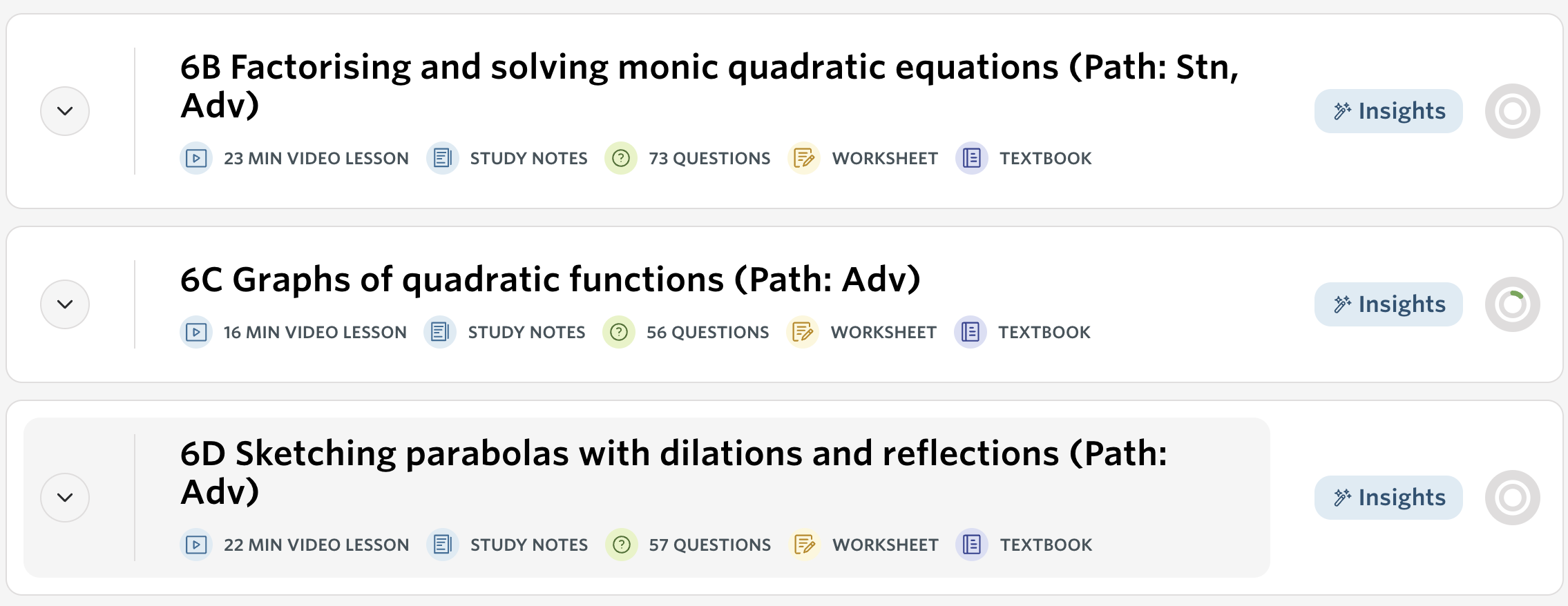Transitioning to the new NSW Maths curriculum
The educational landscape in New South Wales is evolving, with the new Mathematics curriculum marking a significant shift from the previous curriculum structure. Here Kathy Lin delves into the key differences between the new curriculum and the old, highlight the core and pathway outcomes, and provide strategies for embracing a more inclusive and differentiated learning system.
Key differences between the new and previous curriculum
.png)
The previous NSW Mathematics curriculum was divided into three levels: for example, Stage 5.1, 5.2, and 5.3. Each level catered to different student abilities, leading to a streaming system that often segregated students based on perceived capabilities. While this system aimed to tailor content to students' skill levels, it often led to limited mobility between streams and did not adequately address the diverse learning needs within a single classroom.
The new NSW Mathematics curriculum introduces significant changes aimed at fostering a more inclusive and differentiated learning environment:
- Core and pathway outcomes: The new curriculum replaces the streaming system with a more flexible approach that includes core and pathway outcomes. This allows all students to access the same foundational content while offering pathways that cater to varying levels of ability and interest.
- Differentiated learning: Instead of segregating students into different streams, the curriculum encourages differentiation within the classroom. This approach supports diverse learning needs and promotes equity, allowing all students to progress at their own pace.
- Focus on inclusivity: The new curriculum aims to create an inclusive learning environment where all students feel valued and supported. This shift moves away from streaming classes, which often reinforced negative labels and limited opportunities for some students.
- Integration of technology: There is a stronger emphasis on integrating technology into mathematics education, providing digital tools and resources that support differentiated learning and engagement.
- Real-world applications: The curriculum highlights the importance of applying mathematical concepts to real-world situations, making learning more relevant and engaging for students.
For a comprehensive overview of these changes, refer to the NSW Education Standards Authority (NESA) official document.
Core and pathway outcomes
The new curriculum is designed to provide a solid foundation in mathematics for all students while offering pathways to extend learning for those who are ready for more advanced content. Here’s how it works:
- Core outcomes: These are the essential skills and knowledge that all students are expected to achieve. Core outcomes ensure that every student has a strong understanding of fundamental mathematical concepts.
- Pathway outcomes: Pathways offer opportunities for students to delve deeper into topics, challenge themselves with more complex problems, and explore areas of interest. These pathways cater to different learning paces and styles, allowing for personalized learning experiences.
For more details on the specific core and pathway outcomes, visit the NESA website.

Step-by-step guide for teaching core and pathways
- Familiarize yourself with the curriculum
- Begin by thoroughly understanding the curriculum documents provided by NESA. Pay close attention to the core outcomes that all students need to achieve and the pathway outcomes that offer advanced learning opportunities.
- Utilise professional development opportunities to deepen your understanding and stay updated with best practices.
- Plan your lessons with differentiation in mind
- Create lesson plans that address core outcomes for the entire class. Ensure these foundational skills are well-taught and understood by all students.
- Identify points in your lesson where you can introduce pathway outcomes for students who are ready for more advanced content. This might include additional problems, projects, or research tasks.
- Use a comprehensive textbook
- Choose a textbook or resource that covers both core and pathway outcomes. This will streamline your planning and ensure all students have access to appropriate materials.
- Organize your lessons so that the core content is covered first, followed by optional pathway activities for those who are ready.
- Implement flexible grouping
- Group students based on their understanding and readiness to tackle more complex tasks. These groups should be dynamic, changing as students progress.
- Use formative assessments to regularly check for understanding and adjust groups accordingly.
- Employ varied teaching strategies
- Mix direct instruction with collaborative group work, hands-on activities, and technology-based learning to cater to different learning styles.
- For pathway activities, consider using project-based learning or inquiry-based tasks that encourage deeper exploration of mathematical concepts.
- Provide ongoing support and feedback
- Offer additional support and intervention for students struggling with core outcomes. This might include one-on-one tutoring, small group sessions, or additional practice materials.
- For students working on pathway outcomes, provide regular feedback and opportunities for self-reflection to help them understand their progress and areas for improvement.
- Encourage a growth mindset
- Foster a classroom environment where all students feel valued and capable of growth. Encourage them to see challenges as opportunities to learn and improve.
- Celebrate successes, no matter how small, and emphasise effort and perseverance.
- Leverage technology
- Integrate digital tools and resources to enhance learning. Online platforms can provide interactive problems, tutorials, and adaptive learning paths tailored to individual student needs.
- Encourage students to use educational apps and websites for additional practice and exploration of mathematical concepts.
For more guidance on differentiation strategies, visit the Inclusive Education section of the NSW Department of Education website.
Moving towards an inclusive learning environment
The shift from streaming to a more inclusive and differentiated approach aligns with best practices in pedagogy. Here are some benefits and considerations for this transition:
- Equity and inclusion: By moving away from streaming, the new curriculum promotes equity and inclusion, ensuring that all students have access to high-quality education and opportunities to succeed.
- Higher expectations: Setting high expectations for all students encourages them to reach their full potential. Differentiation allows you to provide the necessary support and challenges to help each student thrive.
- Collaborative learning: An inclusive classroom fosters a collaborative learning environment where students can learn from and support each other. This builds a sense of community and enhances the learning experience for everyone.
To find out more about Edrolo for 7-10 Maths in NSW, click here.

